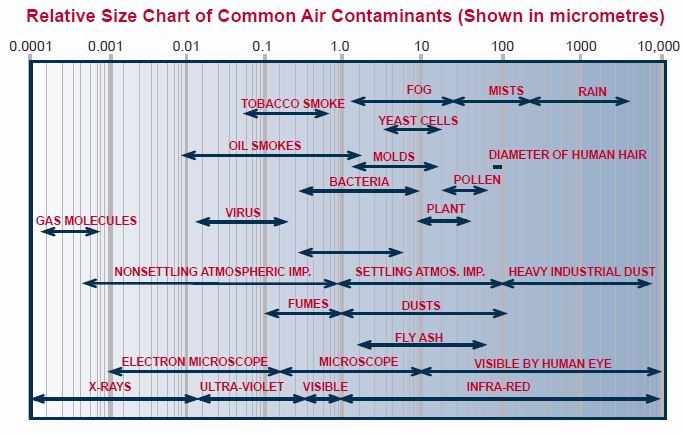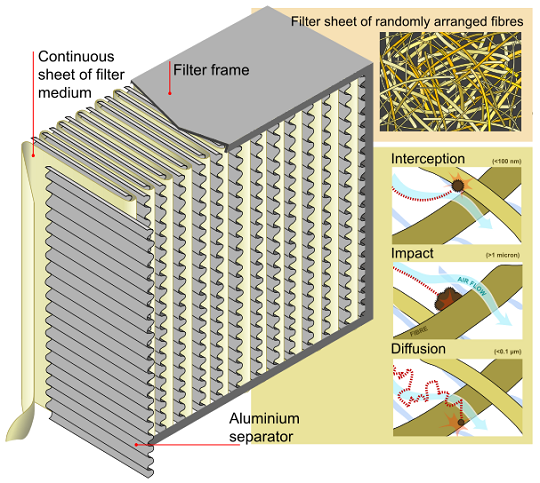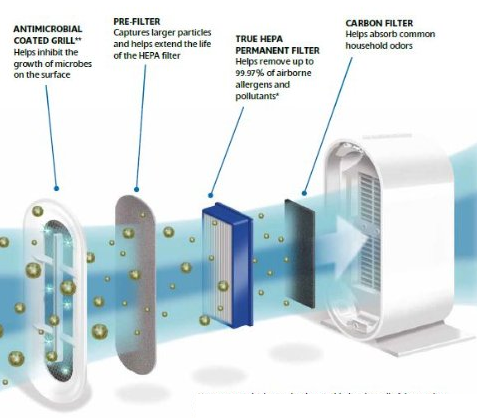Indians are pro actively taking preventive measures in their everyday lives to improve and maintain a healthy lifestyle. In the last six months, there has been a huge spike in the average daily sales of health and fitness products, says a report by Flipkart released in Apr 2016. Lets look at the Flipkart report on Shopping Patterns and then look in detail about Air Purifier. Questions that one has ,What is Air Purifier? Should I buy an air purifier? I’m considering buying an air purifier, but I wanted to see what other’s experiences have been. Is it worth it? Will I notice a marked improvement in how I feel and sleep? And what about cost differences? Will getting a cheap air purifier work, or will I be wasting money?
Table of Contents
Flipkart report on Shopping Patterns
Shopping patterns on Flipkart reveal some interesting facts about the most health conscious cities in India. Rapid increase in pollution levels, long work hours and stressed work-life balance have opened up a whole new market for health and fitness products.
With chart topping demand numbers for air purifiers and fitness bands, Delhi has been identified as India’s most health conscious city followed by Bangalore, Mumbai, Kolkata and Chennai. Indians are proactively taking preventive measures in their everyday lives to improve and maintain a healthy lifestyle. For example: Fitness bands are most popular between the age group of 20-35 years. Air purifiers are a big hit amongst 35-50 year olds.
In the last six months, there has been a huge spike in the average daily sales of health and fitness products. A study conducted by Flipkart has pointed out some insights on what the health conscious cities in India are purchasing:
Delhi, Bangalore and Mumbai are the most health conscious cities in India.
- Air purifiers, advanced water purifiers, air fryers, fitness bands, glucometer, BP monitor and weighing scales are the most popular products. Health and fitness category has witnessed a 2X growth in the last six months.
- High pollution levels have increased the risk of air and water borne diseases in metro cities. Air and advanced water purifiers are the top selling products in cities like Delhi, Bangalore and Mumbai with 1.7X growth. Kent, Eurekaforbes, Philips and Prestige are the most sought after brands for these products.
- Fitness bands have emerged as the must-have heath accessory for every Indian. This is one of the fastest growing product segments on Flipkart with top selling products from brands like GoQii, Fitbit, Garmin, Moov.
- Specialized health products like BP Monitors and Glucometers have witnessed 1.5X growth. This range of products is extremely popular amongst 35-50 year olds. Omron, Accuchek, Dr. Morepen and Johnson & Johnson are the top selling brands.
- Weighing scales and juicers have also witnessed a significant rise in demand. Compact juicer sets are extremely popular amongst young Indians. Health Sense, Venus, Philips and Bajaj are the top brands for these products.
Air Purifier
When it comes to the environment, doom and gloom is often the news of the day. There are heated discussions about the effects of climate change, record temperatures, and unseasonably warm or wet seasons . Air in our cities is toxic. In fact, 13 of the 20 most polluted cities in the world are in India. Oftentimes, the condition of the air outside heavily influences the quality of indoor air. Regional allergens like pollen, as well as one’s proximity to busy roadways, industrial operations, and major cities can affect the quality of the air inside homes, schools and businesses. Of these, each indoor environment varies, based on how well the space is sealed and/or ventilated, and specific indoor pollutantslike cigarette smoke, dust and humidity levels.
Air purifiers are devices that clean the indoor air by removing impurities such as dust particles, pollen, smoke and other airborne irritants. Their aim is to typically provide uncontaminated air, though many companies also claim that their purifiers reduce allergic reactions and asthma attacks. Air purifiers cost anywhere between Rs 15,000 and Rs 95,000. The air purifier market in India has grown from almost nothing to over Rs 150 crore ($23.45 million) in the last few years.
Air Containments
Air contaminants are particles, liquids, and gases in the air which have harmful chemical properties that affect our health. Some of the substances floating around the home are.
- Microbes: germs, viruses, bacteria, and mold spores
- Odors: cigarette smoke, litter boxes, cooking, body, and pets
- Gases and Chemical Fumes (volatile organic compounds – VOC’s): benzene, cigarette smoke, formaldehyde, nail treatment products, etc.
- Particulates: allergens, dust, dust mites, pollen, pet dander, particles in smoke
Air contaminants are usually measured in size in microns. When air contaminants are inhaled, the body’s natural defense system is more vulnerable to small particles below 0.5 microns. Size in microns: dust particles (including PM 2.5 particles—the tiny particulate matter that causes the most damage to human health)
- Pollen (5-100 microns) :Each spring, summer, and autumn, tiny particles are released from trees, weeds, and grasses. These particles, known as pollen, hitch rides on currents of air. Although their mission is to fertilize parts of other plants, many never reach their targets. Instead, they enter human noses and throats, triggering a type of seasonal allergic rhinitis called pollen allergy
- Mold (2-20 microns) : Mold, one type of fungus, is different from plants, animals and bacteria, it grows in the form of multicellular thread-like structures called hyphae. Molds release small spores into the air. These spores are small enough that people can actually inhale them deep into the lungs. Inhalation of spores poses risk of developing respiratory problems.
- Pet Dander (0.5-100 microns). Pet dander is composed of tiny, even microscopic, flecks of skin shed by cats, dogs, rodents, birds and other animals with fur or feathers. These bits of skin can cause reactions in people who are specifically allergic to these triggers.
- Dust Mite Debris (0.5-50 microns) : House dust mites are microscope bugs that primarily live on dead skin cells regularly shed from humans and their animal pets. Skin cells and scales, commonly called dander, are often concentrated in lounging areas, mattresses, frequently used furniture and associated carpeted areas, often harbor large numbers of these microscopic mites. Since the average human sloughs off 10 grams of dead skin a week. That gives dust mites a lot to eat. Cats and dogs create far more dander for dust mites to eat. In people allergic to dust mite, it is often not the mite itself but proteins in their droppings which cause the allergy. Each mite produces about 20 of these waste droppings every day and the droppings continue to cause allergic symptoms even after the mite has died.
- Bacteria (0.35-10 microns)
Technologies associated with Air Purifier
Air Purifiers are different because they use different technologies, Various technologies are associated with Air Purifier. Some of these are HEPA, Ionizer, Ultra violet lamp, Carbon filter and Ozone generators.
HEPA Filtration
HEPA stands for High Efficiency Particulate Air or high-efficiency particulate arresting . This air purification technology was originally developed during World War II to remove radioactive dust particles from the air to protect soldiers’ respiratory systems. Today they are often used to filter household air with the capacity to trap 99.97% of all airborne particles that are as small as 0.3 microns in size and 95% of minute particles down to 0.1 micron. HEPA air filters are the most recommended because of their ability to remove the majority of air contaminants down to the microscopic level.
HEPA filters work by pulling or pushing the air through a filter screen that catches these contaminants. Think of them as being like the sieve you use to separate vegetables from the water you cook them in: the veggies gets caught in the sieve, the water (or air) passes right through. While the peas boiling on your stove are easy for a sieve to catch, the things in the air are a bit harder; HEPA provides a way to set a standard for how many airborne “peas” get caught, and how quickly the air can pass through the sieve. HEPA filters are made from a fabric of tangled, warped fibers. These fibers are in a random pattern, with strands bending and curving in all directions to form a confusing, twisty maze that the air must go through. As the particles pass through the filter, they are caught in this maze in four ways: impaction, sieving, interception and diffusion. From Wikipedia article on HEPA
Activated Carbon Filters
Activated Carbon filters have small absorbent pores that chemically react to pollutants as they pass through the filter. This causes the pollutants to bond with the carbon and become trapped. These purifiers are effective at clearing smoke, odours, chemicals and even gases from the air. Activated Carbon filters are rarely used alone to purify air, and are often used in conjunction with other filters.
Ionic Filter
An air ioniser or negative ion generator or Chizhevsky’s chandelier is a device that uses high voltage to ionise or electrically charge air molecules. Negative ions, or anions, are particles with one or more extra electrons, conferring a net negative charge to the particle. Cations are positive ions missing one or more electrons, resulting in a net positive charge. The air ionizer contains collection plates that have an opposite charge from the particles in the air, so the particles are drawn to the collection plates. Also, the particulates can be attracted to other particles that have an opposite charge. When this happens the two particles with opposite charges wind up sticking together and falling out of the air. They are very quiet compared to most HEPA machines.
Ultraviolet Light Air Purifiers
This purifier uses a UV light that will destroy bacteria and other pathogens by breaking the molecular bonds in their DNA. UV air filters kill these particles without any actual filtration, but rather use rays of ultraviolet light to eliminate them as they pass.
OZONE GENERATOR
Ozone is the protective layer of the earth’s atmosphere and how it shields us from harmful ultraviolet radiation. The oxygen that we need in the air we breathe has molecules of two oxygen atoms (O2). Ozone is a colorless gas composed of three oxygen atoms (O3). Though clear, it is responsible for the faint blue afterglow of electric arc discharge. Ozone is a toxic gas with vastly different chemical and biological properties from O2. It is chemically reactive, and destroys destroys certain bacteria, chemicals, bacteria and chemicals. Although ozone is very effective against strong odours, there is a caution you should consider. When ozone reacts with substances in the air, the substances are broken down into other materials that are also pollutants. This is where the controversy lies with ozone machine
Comparison of Air Purifier Technology
Comparison of Air Purifier Technology is given below.
| Type of Purifier | Size of Particles Removed | Removes Allergens (dust, pollen, mold spores) | Removes Bacteria | Removes Odors | Removes Viruses & Germs | Removes Cigarette Smoke | Removes Chemical Fumes |
| HEPA | down to 0.3 microns | Yes | some bacteria | No | No | no | no |
| Ionizer | down to 0.1 microns | Yes | Yes | no | viruses | Yes | some |
| Ultra Violet Lamp | – | Some | Yes | no | Yes | no | no |
| Carbon Filter | – | Some | some | Yes | no | Yes | Yes |
| Ozone Generator | – | No | some | Yes | some | Yes | some |
Most Air Purifiers use combination of technologies as shown in image below
Before Buying an Air Purifier
- What do you need? Which things will be removed from the air by the device? Do you need an air purifier for allergens, pollen, gas, dander, smoke, etc? Determine what contaminants you want the air purifier to remove and meet your health concerns. Pollen, mold, pet dander, dust mites, and bacteria are in between 0.3 to 5 microns. A HEPA filter can easily trap these contaminants or anything bigger than 0.3 microns. Contaminants such as viruses, chemical fumes and cigarette smoke are smaller than 0.3 microns and cannot be filtered out by HEPA filters. If you are looking to remove these contaminants you will need to purchase an ionizer, activated carbon filter, or an Ultraviolet air purifier.
- Which size of room can it work well?Room size recommendations are expressed in square feet, assuming an 8-foot ceiling. If your room has a ceiling higher than 8 feet, convert the recommended room size of an air purification unit to cubic feet by multiplying by 8 (the ceiling height AHAM assumes). Next, calculate the cubic footage of your room by multiplying length x width x height and compare.
- Running cost: How often do you have to replace the part? And how about the cost? Consumables and spares cost must be reasonable. Many air purifiers have high spares/ filters cost as compared with others. Replacement filters can be a significant cost. Check the manufacturer’s replacement interval and filter cost. Please ensure they are freely and easily available in the market.
- Easy of use & maintenance. Machine should be so designed that can be cleaned/ maintained easily, without special tools and skill. Make sure that filter changing, operating, and cleaning are not too much of a challenge
- Brand name & local support. It is better to go with good brand with local support, so you may get reasonable after sales service locally.
- The Clean Air Delivery Rate (CADR) is a standard measurement of the total volume of air that an air purification system can cleanse of a specific pollutant in one hour. A higher number indicates the unit is more efficient in cleaning the air of that particular pollutant.
- Cubic feet per minute (CFM). This is the amount of air that flows through the purifier per minute. This is important because you will not receive the full value of your air purifier if the amount of air filtered per minute is very small. For reference, 350-400 CPM is a more powerful air purifier.
- Noise level You need to get an idea for the level of sound an air purifier will make as Operating noise can become a concern. Most air purification manufactures list a decibel rating for each air purifiers fan speed. Chart below shows the decibel level of some of the activities.Quiter units are about 35 decibels.
|
10 dB
|
Breathing
|
|
20 dB
|
Falling Leaves
|
|
30 dB
|
Whisper
|
|
40 dB
|
Raindrops
|
|
50 dB
|
Average Home
|
|
60 dB
|
Normal Conversation
|
|
70 dB
|
Vacuum Cleaner
|
Comparison of Air Purifiers
Many companies like Philips, Blue Air, Sharp, Kent, Atlanta, Crusaders, Eureka Forbes, Daiken, Hosair etc. are in Indian air purifier market. We randomly selected 4 air purifiers from the Flipkart and did comparison. The results are as follows.
Related Articles:
- How Gold Ornament is Priced?
- Buying Jewellery Online
- Smartphone,Tablet, Laptop, Netbook: What should you buy and Why?
- Understanding Ex Showroom Price and On Road Price of Vehicle
- What happens when credit card is swiped?
[poll id=”82″]
Many feel Air Purifiers are waste of money. You have to go out and breathe the air anyway, so why bother. But on an average, a person takes 1,000 breaths an hour.A majority of that time is spent indoors. If you can breathe cleaner air for even 12 hours, you cut your exposure to harmful air by 50%. You reduce your risk by 50%. And For those who have allergies, how unpleasant are the symptoms ,running nose, sniffle, sneeze, and wheeze as well as how much effort in reducing those nuisances, air purifier might just provide the relief. Did you buy any air purifiers? What kind of benefit you realized?











Thanks for the post. I’m more convinced of getting an air purifier for my mother-in-law. We have four dogs in the house. Their furs and danders are probably what’s giving her coughing fits.
Thanks for sharing Air Purifier buying guide. How to buy an Air Purifier?
. For More Information Visit https://hicare.in/air-purifier/blueair-air-purifiers
Thanks for sharing. How to buy an Air Purifier? For More Information Visit https://hicare.in/air-purif…
Air purifiers are only used to clean indoor air, but do nothing for indoor humidity levels
This is really a nice post about Air Purifier. I do not plan to buy it as of now but I got the information i wanted. Thanks !
This is really a nice post about Air Purifier. I do not plan to buy it as of now but I got the information i wanted. Thanks !
I live in a very dry and hot city. Summers are extremely dry. Should I buy humidifier or purifier? Which brand or model do you recommend for dry weather?
Air purifiers are only used to clean indoor air, but do nothing for indoor humidity levels. They remove dust and smoke from the air, as well as allergenic substances like animal dander and pollen. Humidifiers add water into the air, but do not clean it.
I live in a very dry and hot city. Summers are extremely dry. Should I buy humidifier or purifier? Which brand or model do you recommend for dry weather?
Air purifiers are only used to clean indoor air, but do nothing for indoor humidity levels. They remove dust and smoke from the air, as well as allergenic substances like animal dander and pollen. Humidifiers add water into the air, but do not clean it.